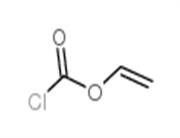Description
Diflunisal (MK-647) is a salicylate derivative with nonsteroidal anti-inflammatory and uricosuric properties, which is used alone as an analgesic and in rheumatoid arthritis patients. The mechanism of action of diflunisal is as a Cyclooxygenase (COX) Inhibitor.
In Vivo
Administration of increasing doses of Diflunisal to rats shows that the effect of the dose on the pharmacokinetics of Diflunisal is quite complicated. The plasma concentrations of Diflunisal decline exponentially with time, albeit with a half-life that increases with increasing dose. The CLP is reduced considerably when the dose increases from 3 to 10 mg/kg and then remains relatively constant over the dose range of 10 to 60 mg/kg. Diflunisal has been shown to be highly bound to rat plasma protein and dependent on concentration. The fraction of unbound Diflunisal is increased about 10-fold over the concentration range of 5 to 300 μg/mL[1]. Diflunisal exhibits activity after oral administration with potency about 25 times greater than that of aspirin, about 3 times that of glafenine and twice that of zomepirac[2].
Animal Admin
Rats[1] For the study of dose dependency, Diflunisal is administered by i.a. injection in doses of 3, 10, 30 and 60 mg/kg (1.5, 5, 15 and 30 mg/mL dosing solution in 0.1 M NaHCO3). The infusion studies consist of a bolus injection of Diflunisal followed immediately by a 7-hr infusion at a constant rate. Seven groups of rats are included in the infusion studies. The loading doses used are 2, 3, 5, 10, 25, 50 and 80 mg/kg and their corresponding infusion rates are 3, 4.5, 9, 18, 36, 72 and 144 μg/min (0.576 mL/hr of seven different dosing solutions: 0.31, 0.47, 0.94, 1.88, 3.75, 7.5 and 15 mg/mL in 0.1 M NaHCO3). Blood samples are collected serially at appropriate times for the dose-dependency studies, but collected hourly for the infusion studies. Plasma is obtained immediately by centrifugation of blood samples and extracted with acetonitrile and then frozen (-20°C) until assay[1].
References
[1]. Lin JH, et al. Dose-dependent pharmacokinetics of diflunisal in rats: dual effects of protein binding and metabolism. J Pharmacol Exp Ther. 1985 Nov;235(2):402-6.
[2]. Winter CA, et al. Analgesic activity of diflunisal [MK-647; 5-(2,4-difluorophenyl)salicylic acid] in rats with hyperalgesia induced by Freund's adjuvant. J Pharmacol Exp Ther. 1979 Dec;211(3):678-85.
[3]. Cappon GD, et al. Relationship between cyclooxygenase 1 and 2 selective inhibitors and fetal development when administered to rats and rabbits during the sensitive periods for heart development and midline closure. Birth Defects Res B Dev Reprod Toxicol. 2003 Feb;68(1):47-56.

 China
China










